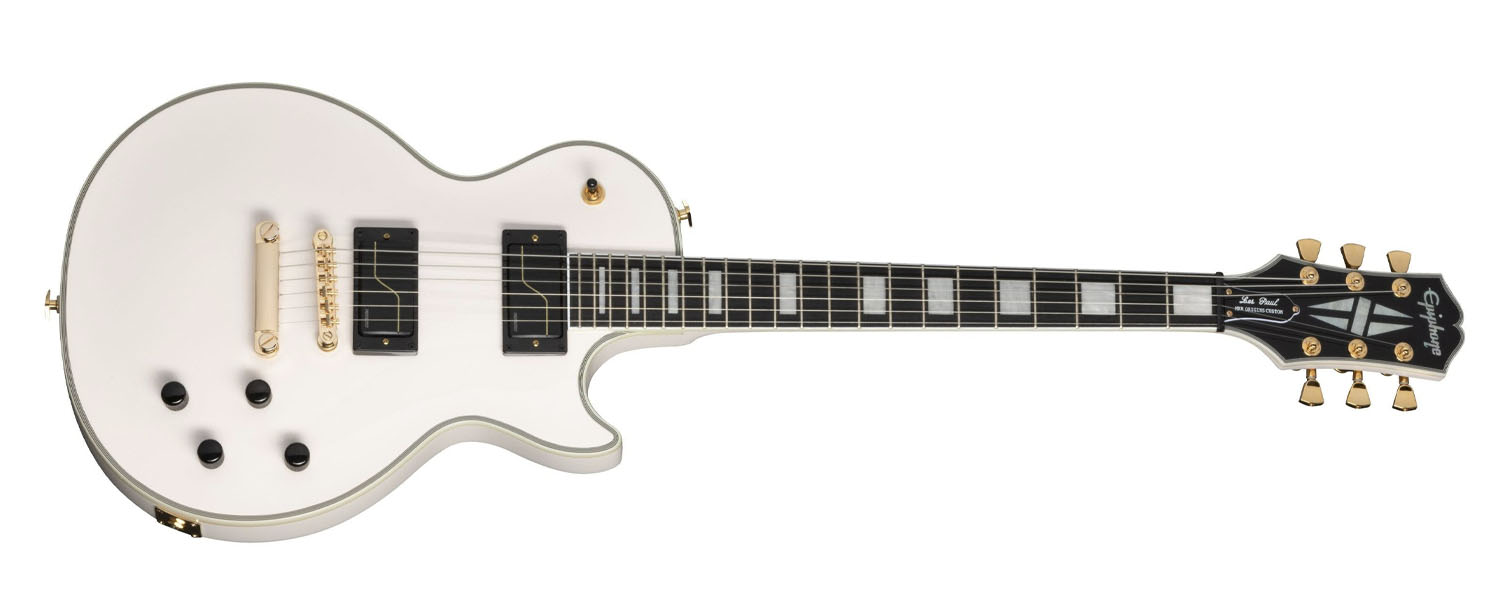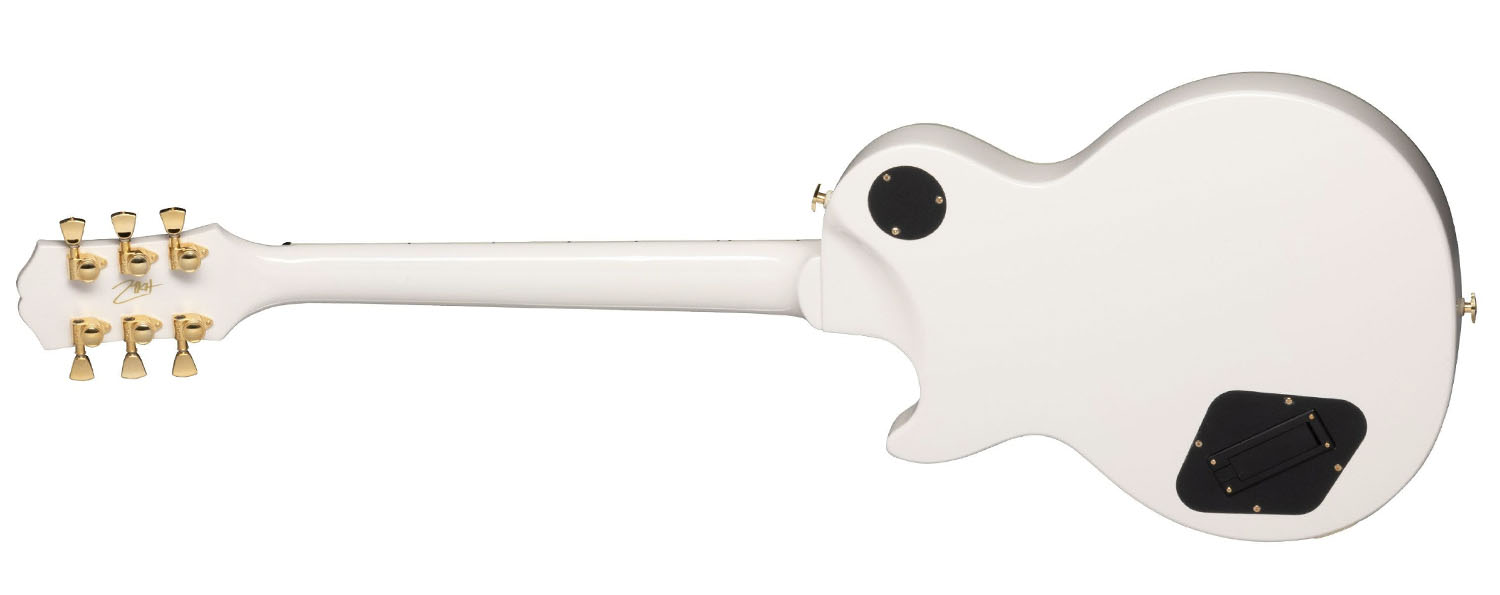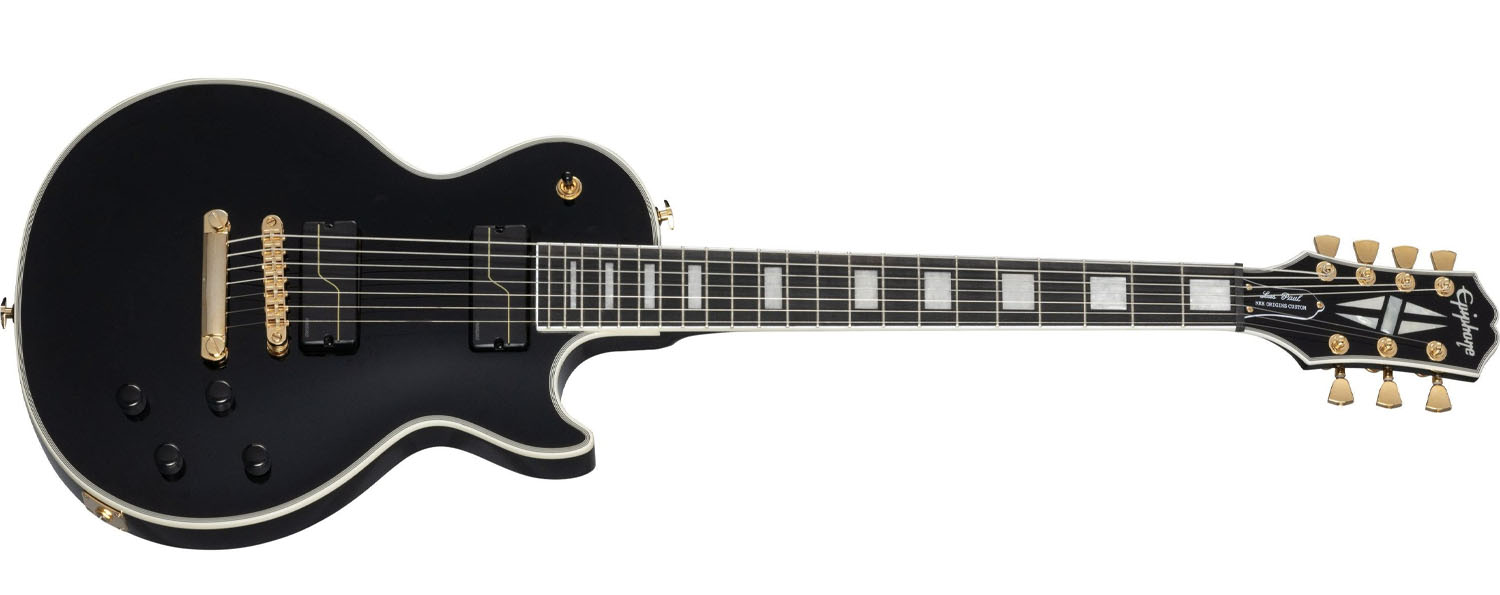Epiphone releases made-for-metal signature six and seven-string Les Paul Customs designed with Matt Heafy of Trivium
The Matt Heafy Les Paul Custom Origins Collection arrives in Bone White and Ebony, and offers modern updates on the classic electric... And yes, left-handed models are available

• GEAR EXPO SUMMER 2022: all the latest gear from NAMM and beyond
Epiphone and Matt Heafy of Trivium have teamed up for the third time to spec up a series of Les Paul Customs that takes the iconic single-cut electric guitar design and adapts it for metal players.
Not only does Heafy’s new signature guitar come strapped with custom Fishman humbuckers, a speedy neck profile with a sculpted heel, there’s even a seven-string version – an act of total iconoclasm but very practical for putting super-heavy low-end riffs within reach.
The Matt Heafy Les Paul Custom Origins Collection offers the guitars in Bone White and Ebony finishes, with left-handed models available for both guitars. The six and seven-string guitars in the collection are all but identical but for the longer scale on the extended-range model.



Both have weight-relieved mahogany bodies and maple tops, glued-in SpeedTaper D profile mahogany necks, and 12” radius ebony fingerboards. The seven-string has a slightly longer 25.51” scale length, while the six-string is a typical 24.75”.
Epiphone and Heafy have deployed custom-voiced Fishman Fluence humbuckers in the neck and bridge positions, offering players a number of different core sounds. At the neck, the active Alnico humbucker offers “crisp, clean and fluid” tones, the sort that make easy work of sweep-picking high-gain arpeggios, with a coil-tap offering “a glassy, scooped, hi-fi single-coil sound”.


In similar scenarios, that active ceramic bridge pickup is all about modern metal tones, but it has range, too, with alternate modes allowing you to run it is a high-output truly passive ceramic humbucker, or as an overwound single-coil.
Want all the hottest music and gear news, reviews, deals, features and more, direct to your inbox? Sign up here.
All of these are controlled via push-pull functions on the familiar dual-volume, dual-tone complement of dials you would find on a regular Les Paul.
There are some subtle aesthetic differences. There is no poker-chip style washer on the shoulder mounted pickup selector, and the control knobs are knurled metal rather than Gibson speed-style.
But nonetheless Heafy does hew close to the classic aesthetic of the Les Paul Custom, with block inlays, multi-ply binding on body and headstock and a bound neck completing the LP-in-a-tux vibe.


“With the timelessness of the Les Paul Custom and the look of the Les Paul Custom, I didn’t want to deviate too far,” says Heafy. “I never have either, I’ve never wanted to go full-blown artwork on the guitar itself other than the classic look.
Whether someone is a Trivium fan or not, I want them to like the instrument
Matt Heafy
“I’ve always felt there is something classic about that black-and-gold Les Paul Custom, that white-and-gold Les Paul Custom. I always do have the concept of, whether someone is a Trivium fan or not, I want them to like the instrument.”
Other player-friendly details include the sculpted heel and the locking Grover Mini-Rotomatics, a Graph Tech Tusq nut, and there’s an Epiphone LockTone Tune-O-Matic bridge and tailpiece.
The Matt Heafy Les Paul Custom Origins Collection ships in a custom hardshell case and is priced £999 / $1,099 for the six-string models, and £1,099 / $1,199 for the seven string.
See Epiphone for more details.
Jonathan Horsley has been writing about guitars and guitar culture since 2005, playing them since 1990, and regularly contributes to MusicRadar, Total Guitar and Guitar World. He uses Jazz III nylon picks, 10s during the week, 9s at the weekend, and shamefully still struggles with rhythm figure one of Van Halen’s Panama.
